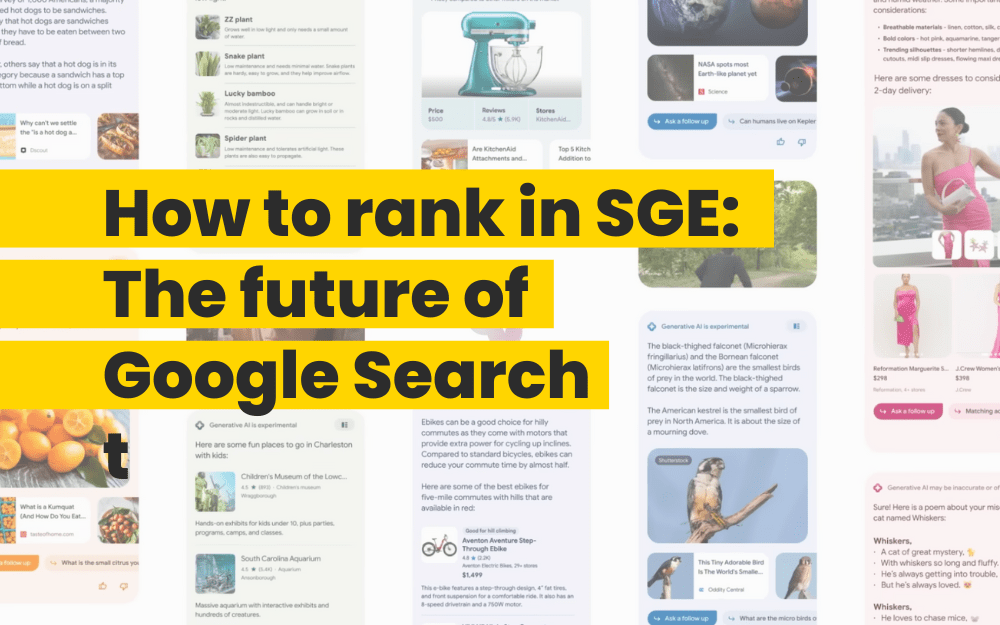In order to track performance of your ad campaigns in Google Ads, it’s necessary to tag their URL with an identifiable piece of code to connect them to conversion events. It wouldn’t be efficient to tag every ad manually, therefore Google Ads provides an auto-tagging feature that automatically adds a Google Click Identifier (GCLID) at the end of the final URL for all your ads. This can then be used to collect metrics and analyse performance of your individual ads in order to gain useful insights and increase marketing performance.
Where to start with auto-tagging?
Your Google Ads and Google Analytics accounts need to be linked in order to pass all the collected information. This will allow you to analyse useful metrics for your ads, ad groups and ad campaigns such as clicks, impressions and conversion rate. The process is the same whether you’re interested in tracking performance of a Search Campaigns, Shopping Campaigns, Display, YouTube Campaigns, etc.
It’s important to collect this data and pass it to Google Analytics because it gives you a detailed picture of what happens after users interact with your ads. This will help you to optimize your landing pages, site design and ad copies, through A/B testing or similar methods.
How to enable auto-tagging in Google Ads
The process of setting up auto-tags in Google Ads is relatively simple. Go to ‘Accounts Settings’ in the list of options on the left-hand side, click on ‘Auto-tagging’ and tick the box.

Enabling this feature will automatically add a GCLID code to the end of the final URL for your ads. The link will change from something like this:
https://support.example.com/test
to this:
https://support.example.com/test?gclid=xyz123
The GCLID code created by auto-tagging feature tracks a wealth of metrics, including:
Traffic source
Medium
Campaign
Ad group
Keyword
Search query
This is very useful for obtaining an in-depth view and understanding of user activity of those who land on your website through your ads.
How to link your Google Ads account to your Google Analytics account
To link your Ads accounts, simply login into your Google Analytics account, go to Admin at the bottom of the left-hand side menu, select correct Property and under Product Linking click on Google Ads linking. Then click on New Link Group and select the account you want to link. Make sure to login into Google Analytics and Google Ads using the same Gmail ID.

Click on ‘Advanced Settings’ and make sure to enable auto-tagging. Then hit save and you’re done.

To verify that the accounts have been linked correctly, you can go to your Google Ads account, click on ‘Tools&Settings’ on the top bar, then click on ‘Linked Accounts’ under Setup. You should see Google Analytics account being linked there and you can view the details.
Manual tagging in special cases
It’s possible to manually tag all your keyword final URL with a tracking variable. However, this can be time consuming and isn’t recommended. Typically, manual tagging is only performed in special cases, for example if your website doesn’t allow arbitrary URL parameters or you want to use tagging for something other than Google Analytics. To set up tags manually, modify final URL of your ads to include tracking parameters, for example changing this:
https://support.example.com/
to this
https://support.example.com/?utm_source=email_campaign&utm_medium=email&utm_campaign=winter-sale
Make sure to separate parameters from the URL with a question mark, list parameters and values as pairs separated by an equals sign and separate each parameter-value pair with an ampersand.
There are five manual parameters that Google Analytics will accept, which are:
utm_source
utm_medium
utm_campaign
utm_term
utm_content
This is significantly fewer parameters compared to auto-tagging, which is one of the reasons why manual tagging is not recommended. For Google Analytics to accept manual tagging in place of auto-tagging, you must enable this feature on your Google Analytics account. That option is located in Admit, under Property, Advanced settings, Allow manual tagging (UTM values) to override auto-tagging (GCLID values).
Once your campaigns are set up and running, measuring its performance alongside other paid media campaigns can be challenging. BOSCO™ Connect provides a streamlined analytics platform, with all your metrics in one easy to understand dashboard. For more information on connecting your data, book a demo.




